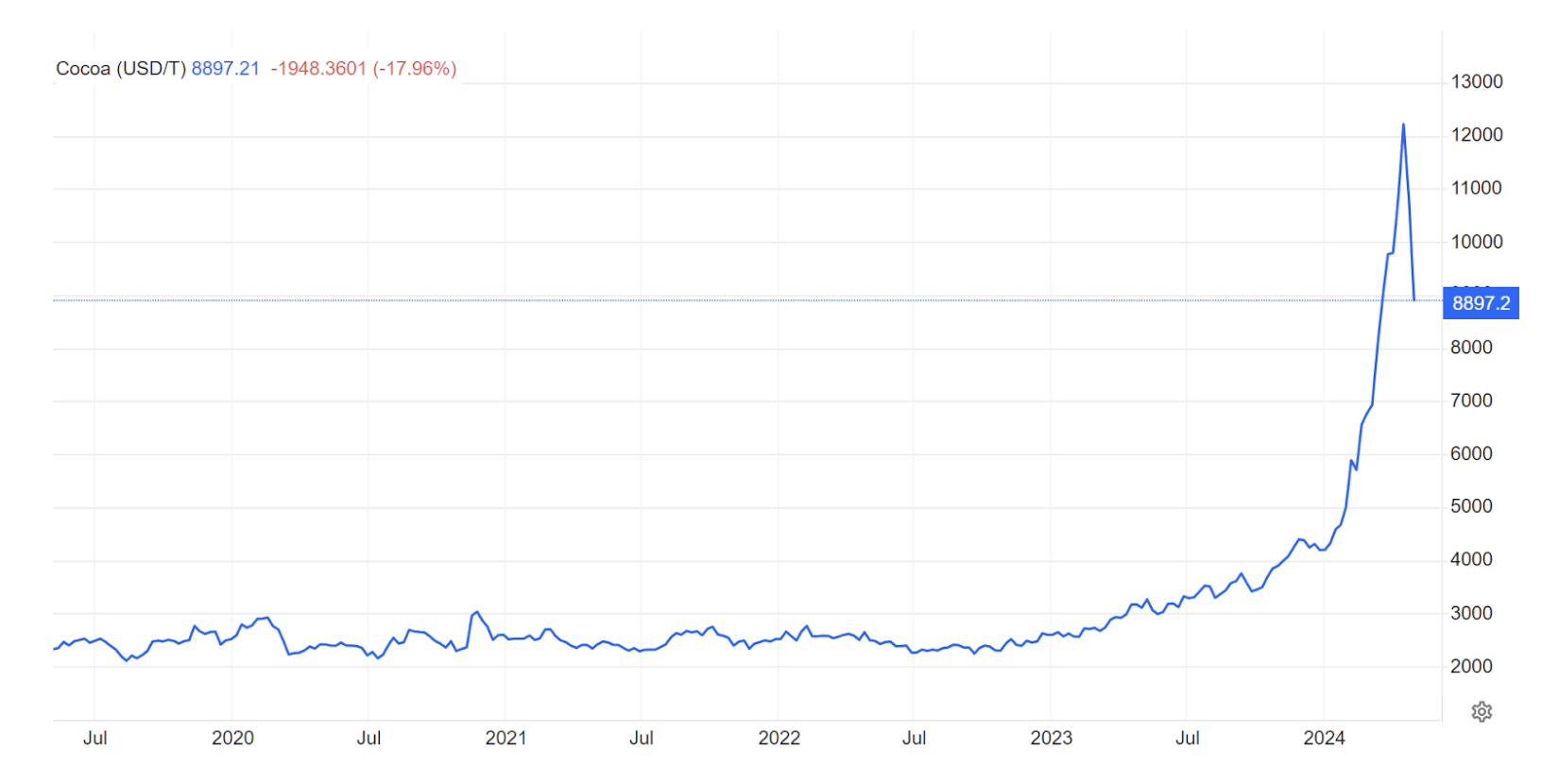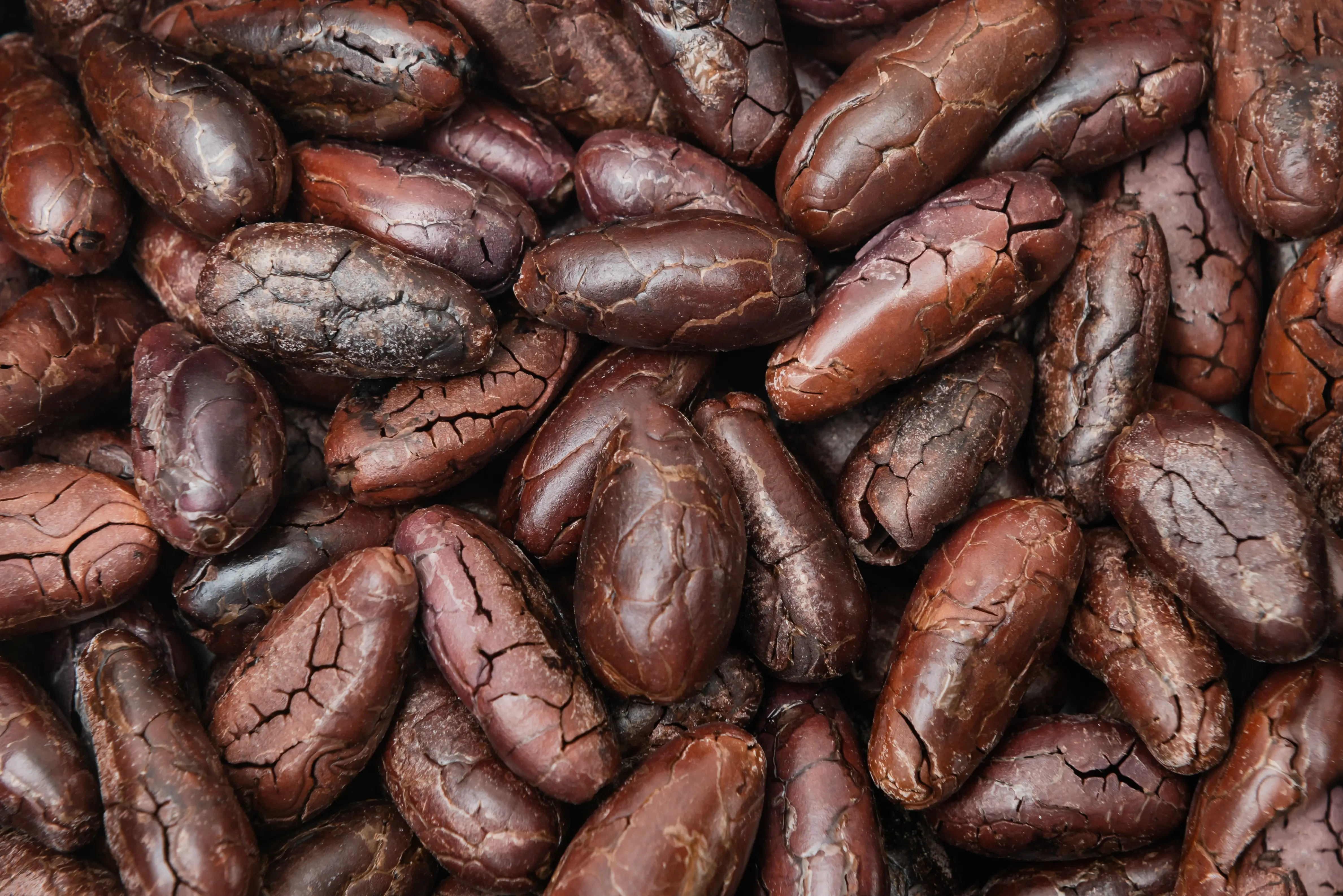Low Cocoa Supply
Currently, cocoa is predominantly grown in West Africa, with Ghana and Ivory Coast, the two largest producers, accounting for 60% of global production. Cocoa is also grown to a lesser extent in South America. In both regions, cocoa is primarily cultivated by smallholder farmers.
The surge in cocoa prices was driven by low cocoa supply, partly due to weather changes associated with the El Niño phenomenon. Although El Niño exacerbated long-standing issues faced by cocoa farmers, such as a drier environment and heavy rains damaging cocoa trees, the main challenges were already present. There has been a decline in cocoa tree population since the last significant planting before 2000.
These challenges have discouraged many farmers, who are transitioning to more lucrative crops like rubber, which yields latex used in making rubber.

Source: https://tradingeconomics.com/commodity/cocoa
Price Decline Driven by Traders
Cocoa prices declined because higher margin calls prompted the closure of long positions in cocoa futures contracts. In other words, the high price made it challenging for cocoa to continue rising. The subsequent initial price drop led to the closing of trades by some traders who were betting on further price increases, creating a snowball effect.
Additionally, higher margins and volatility in the cocoa market led to a decline in liquidity and trading volume, from approximately 400,000 lots in November to around 243,000 lots currently.
The entire effect was reinforced by the announcement that Nigeria, the fifth-largest cocoa producer, increased its cocoa exports by 19% year-on-year. This caused the price to drop by almost 20%. From its peak, cocoa prices are now lower by nearly 30%.*
Future of Chocolate Prices
Although cocoa price directly contributes only 10% to chocolate bar prices, the drastic increase in cocoa prices is expected to be reflected in retail prices around the turn of 2024 and 2025. This is because major global companies processing cocoa, such as Nestlé, Lindt, and Mondelez, have long-term contracts that guarantee them a fixed cocoa price over an extended period. However, when renewing these contracts, the current much higher cocoa price will be taken into account.
One way out of this situation is to increase cocoa production. Farmers in South America are trying to take advantage of the high cocoa prices by planting more cocoa trees. However, until these trees start producing cocoa, prices may fall back down. The solution could be a global minimum price that cocoa farmers receive for their produce.
* Past performance is no guarantee of future results.
Sources:
https://tradingeconomics.com/commodity/cocoa
https://www.nasdaq.com/articles/cocoa-prices-plunge-as-higher-margin-calls-spark-long-liquidation




.jpg)
.jpg)


